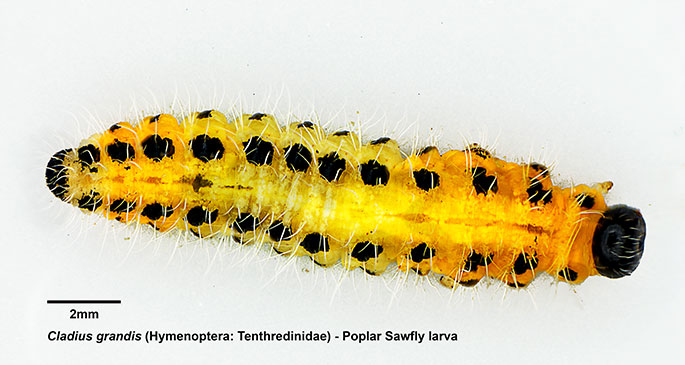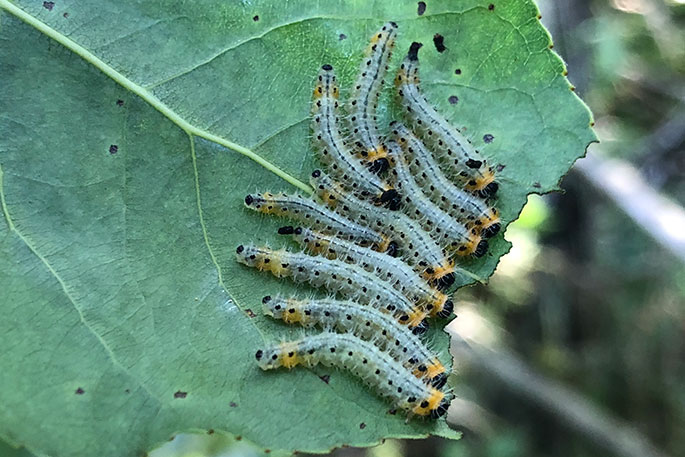Biosecurity New Zealand's Gypsy Moth surveillance programme has uncovered a larva of the poplar sawfly, an insect that is new to New Zealand.
The larva was detected in a trap in the suburb of Abbotsford, Dunedin, and testing has confirmed it is the poplar sawfly.
Manager of Biosecurity Surveillance and Incursion, Brendan Gould, says the species is not known to cause significant harm.
'Countries overseas where the poplar sawfly is present have not reported any major concerns about the impact it can cause. At worst it appears to cause some defoliation of poplar trees.”
The poplar sawfly is commonly found in Europe, Asia and North America.
Brendan says Biosecurity New Zealand is assessing the potential risk from the poplar sawfly.
'Once this assessment is complete we will decide on next steps alongside our GIA industry partners.”
Biosecurity New Zealand has undertaken surveillance in the area where the larva was found and has determined there is an established sawfly population in the area.
'We would like to hear from anybody who thinks they might have seen poplar sawfly larvae on poplar trees. This, along with further sampling in the area, will help us identify how far it has spread.”
If you live outside of Dunedin and Mosgiel and believe you have seen poplar sawfly larvae, keep hold of them, take a photo and call Biosecurity New Zealand's exotic pests and diseases hotline, on 0800 80 99 66.

What do they look like?
Poplar sawfly larvae are up to 16mm long. They are overall yellow with two lateral rows of black spots and whitish hairs, heads are blackish and brownish, except some yellow spots on the frontal part.
Adult poplar sawflies are less likely to be recognisable to the public as they are small and fly in the air. They are 6-9mm long and their colouring is reddish yellow and their heads and part of thorax are black. Their wings are yellowish and glassy, and veins on wings are a reddish yellow.



3 comments
Observation
Posted on 08-03-2019 13:08 | By tish
"They are overall yellow with two lateral rows of black spots and whitish hairs, heads are blackish and brownish, except some yellow spots on the frontal part." except those in the first image which are predominantly green.
AH YES - known to attack POPLAR trees
Posted on 08-03-2019 21:31 | By The Caveman
In other countries but can "Manager of Biosecurity Surveillance and Incursion, Brendan Gould" tell us what research has been undertake to give assurance to his statement that " the species is not known to cause significant harm" to NZ NATIVE TREES
AND HOW DID THEY GET HERE ???
Posted on 09-03-2019 21:42 | By The Caveman
OH, MPI and their "extras'" have NO idea how they got here !!! REALLY !!!! Simple answer is the so called "boarder security" is not worth the "name" - they have NO idea about the volume of plant / seed material coming into NZ. AND the UNDETECTED plant / seed material is the problem. OH and we have Aussie Emperor Gum Caterpillars on our gum trees this year - only see them every 3-5 years (over the past 35 years), but they are huge beautiful, and we don't mind them eating a few gum leaves!!
Leave a Comment
You must be logged in to make a comment.